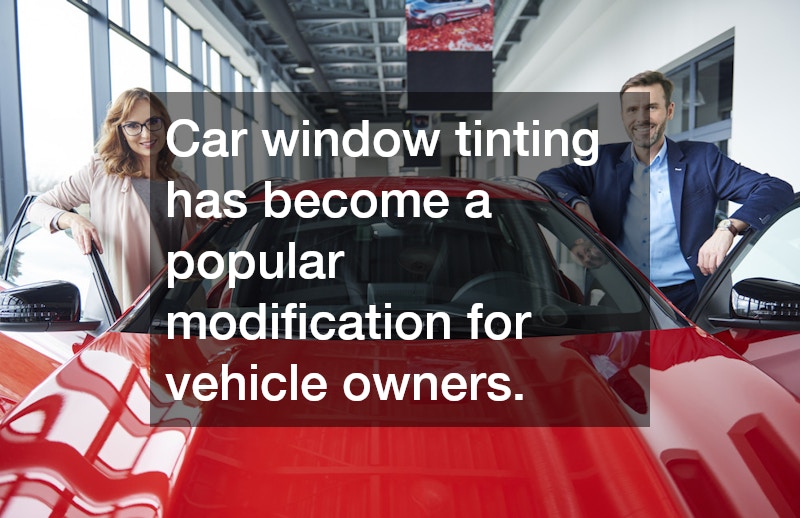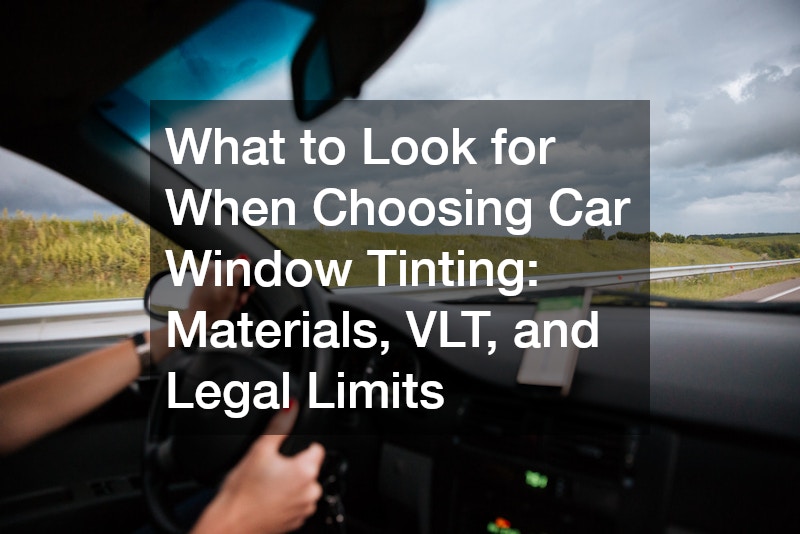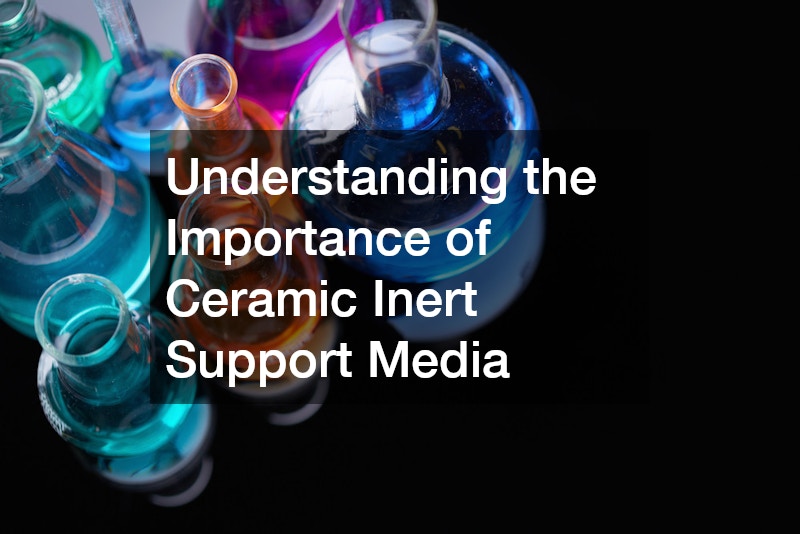
What to Look for When Choosing Car Window Tinting: Materials, VLT, and Legal Limits
Car window tinting has become a popular modification for vehicle owners looking to enhance privacy, reduce glare, and improve aesthetic appeal. However, the choice of window tint involves understanding several factors, including materials, VLT (Visible Light Transmission), and legal regulations. This article will guide you through what to consider when selecting the right car window tinting.
What Are the Different Materials Available for Car Window Tinting?
Dyed Window Tints
Dyed window tints are composed of a layer of dye between an adhesive layer and a protective polyester top coating. This structure makes it one of the most affordable tinting options available in the market.
While these tints effectively reduce glare, they offer minimal heat reduction compared to other types. This characteristic makes dyed tints more suitable for aesthetics and privacy rather than thermal control. However, exposure to UV rays over time can cause the dye to fade, affecting its effectiveness and appearance. Despite this, many drivers opt for dyed window tints due to their cost-effectiveness and ability to provide a sleek look.
Ceramic and Metalized Tints
Ceramic and metalized tints offer advanced features that cater to those seeking enhanced vehicle protection. Ceramic tints, although more costly, stand out due to their excellent heat rejection and non-fading properties. Made from nano-ceramic particles, these tints do not interfere with electronic signals and offer superior UV protection. On the other hand, metalized tints contain tiny metallic particles that not only provide a reflective surface but also help in heat rejection. However, metalized tints might interfere with signals from phones and GPS systems, which could be a limitation for some users. Both types are favored for their durability and longer-lasting performance compared to dyed tints.
How Does Visible Light Transmission (VLT) Impact Car Window Tinting?
Understanding VLT Percentages
Visible Light Transmission (VLT) refers to the amount of visible light that can pass through the window tint. The VLT percentage directly impacts the balance between visibility from inside and privacy from the outside. A higher VLT means more light passes through, allowing for better visibility but less privacy. On the contrary, a lower VLT percentage provides increased privacy but can compromise visibility, especially at night. Selecting the right VLT depends on individual preferences, climate conditions, and the purpose for tinting. Understanding these elements helps in choosing a suitable VLT that meets personal and vehicle-specific needs.
Effects on Driving and Vehicle Safety
The choice of VLT significantly influences driving conditions and overall safety on the road. Tints with very low VLT can impair visibility, particularly during nighttime or in poor weather, posing risks to both the driver and pedestrians. However, when carefully selected, tints with a balanced VLT not only enhance privacy but also reduce glare, which can improve driving comfort and safety. It’s important for drivers to consider how the VLT percentage affects their visibility before making a selection. Balancing safety with aesthetic preferences ensures a more secure and pleasant driving experience.
What Are the Legal Limitations for Car Window Tinting?
State and Local Regulations
Understanding and adhering to state and local regulations is crucial when selecting car window tinting. Different jurisdictions have specific laws regarding permissible tint levels, which often vary for front, side, and rear windows. It’s imperative to research and comply with these rules to avoid any legal issues associated with non-compliant window tinting. Ignorance of these laws can lead to unnecessary fines and the requirement to remove or adjust the tint. Legal tint limits ensure that drivers maintain adequate visibility for safety purposes. Staying informed about these regulations helps vehicle owners make responsible and lawful tinting choices.
Consequences of Non-compliance
Non-compliance with tinting laws can lead to several consequences, including palpable fines or vehicle inspection failures. In addition to financial penalties, failure to comply can result in increased scrutiny from law enforcement, which might distract from safe driving practices. Moreover, improperly tinted windows can void insurance claims in the event of an accident, adding unforeseen liabilities for drivers. Therefore, adhering to prescribed legal limits not only avoids fines but also ensures that vehicle owners remain in accordance with insurance policies and safety standards. Remaining compliant safeguards both the vehicle and its occupants from potential legal and financial setbacks.
Conclusion
Choosing the right car window tint requires careful consideration of materials, VLT, and legal requirements. By understanding these factors, you can make an informed decision that enhances your vehicle’s comfort and compliance with legal standards. Whether it’s dyed, ceramic, or metalized tints, each offers distinct benefits that cater to different needs and preferences. Equipping yourself with knowledge about VLT and relevant regulations ensures that your vehicle remains both stylish and safe. Ultimately, the right window tint not only aligns with personal taste but also harmonizes with legal obligations and safety considerations.





